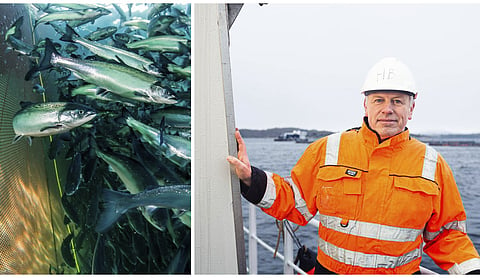

Oceanographer Bjørn Einar Grøsvik calls for more knowledge about the impregnating agent.
Erling Svensen, Christine Fagerbakke / HI
The Institute of Marine Research (HI) risk report for Norwegian fish farming warns that small traces of the impregnating agent tralopyril have been found in salmon fillets in trials. This component is used to replace copper in aquaculture cages.
According to oceanographer Bjørn Einar Grøsvik, the agent tralopyril is similar to other aquaculture products, such as medications for sea lice. Values have already been established for these substances based on calculations of what is acceptable in terms of food safety.
Through experiments, the oceanographer and his team have observed that fish absorb tralopyril and excrete both breakdown products and this impregnating agent in their feces.
"This is a substance that usually does not exist in nature, and there are also no established limits for how much is acceptable in food or ingredients used in animal feed," he explained.
Tralopyril concentration can affect fish at lethal levels in certain conditions, such as poor water renewal.
In addition, researchers suspect that tralopyril may negatively impact fish gills, as it inhibits the function and energy production in cells' mitochondria. All this prevents energy absorption and causes oxidative stress.
According to the FHF project MetoMilo, led by the Research Manager Trine Dale at the Norwegian Institute for Water Research (NIVA), we need more methods to assess aquaculture's environmental effects because environmental monitoring and sampling are not enough.
